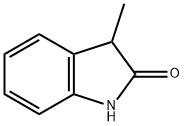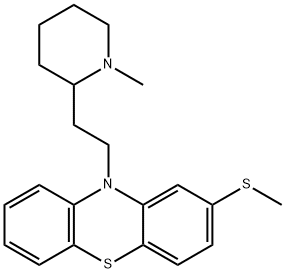3-(Methylthio)propionaldehyde
Synonym(s):3-(Methylmercapto)propionaldehyde;3-(Methylthio)propanal;3-(Methylthio)propionaldehyde;Methional;NSC 15874
- CAS NO.:3268-49-3
- Empirical Formula: C4H8OS
- Molecular Weight: 104.17
- MDL number: MFCD00007022
- EINECS: 221-882-5
- SAFETY DATA SHEET (SDS)
- Update Date: 2024-12-18 14:08:57

What is 3-(Methylthio)propionaldehyde?
Chemical properties
CLEAR COLOURLESS LIQUID
Chemical properties
3-(Methylthio) propionaldehyde has a powerful, onion, meat-like odor. It has a pleasant, warm, meat and soup-like flavor at low levels
Occurrence
Reported found in potato, potato chips, asparagus, tomato, tomato paste, wheat and rye bread, many cheeses, boiled egg, meats, hop oil, beer, malt whiskey, cocoa, coffee, roasted filberts and peanuts, popcorn, baked potato, cooked chicken, oatmeal, passion fruit, beans, mushroom, macadamia nut, tamarind, parsnip root, jackfruit, pumpkin, sweet corn, dried bonito, krill, shrimps, crayfish and scallops
The Uses of 3-(Methylthio)propionaldehyde
3-(Methylthio)propionaldehyde, is used as food flavour ,for making Baked food, spices, soft drinks, candy. It is also used as an intermediate. It has wide applications in organic synthesis as solvents as well as reagents. They are used in the synthesis of specific compound classes include agricultural chemical, property-enhancing additives, pharmacological drugs, chemical resistant polymers, detergents, and rubber antioxidants. Some examples of aliphatic and aromatic thioethers found in flavouring agents
The Uses of 3-(Methylthio)propionaldehyde
3-Methylthiopropionaldehyde is a synthetic flavoring agent that is a colorless to light yellow liquid with an intense meat odor. it polymerizes with age and is stable in a 50% alcohol solution. it should be stored in glass containers. it is used at low concentrations for meat and broth flavors for applications in meats and condiments at 3 ppm and in baked goods and beverages at 0.5 ppm.
What are the applications of Application
3-(Methylthio)propionaldehyde is the major product of chemical methionine conversion via Strecker degradation in food
Preparation
By transamination and decarboxylation of various amino acids; by oxidation of the alcohol
Definition
ChEBI: 3-methylthiopropanal is an aliphatic sulfide. It has a role as a prostaglandin antagonist. It is functionally related to a propanal.
Aroma threshold values
Aroma characteristics at 0.1%: vegetable oil, creamy tomato, potato skin and French fry, yeasty, bready, limburger cheese with a savory meaty brothy nuance
Taste threshold values
Taste characteristics at 5 ppb to 5 ppm: potato, musty, tomato, mold ripened cheeses, onion, beefy brothy, egg, seafood and vegetative nuances.
Synthesis Reference(s)
Journal of the American Chemical Society, 70, p. 1450, 1948 DOI: 10.1021/ja01184a044
General Description
A colorless to amber liquid with an extremely foul and persistent odor. Slightly soluble in water and denser than water. Contact may slightly irritate skin, eyes and mucous membranes. Moderately toxic. Used as a food additive.
Air & Water Reactions
Slightly soluble in water.
Reactivity Profile
Organosulfides, such as 3-(Methylthio)propionaldehyde, are incompatible with acids, diazo and azo compounds, halocarbons, isocyanates, aldehydes, alkali metals, nitrides, hydrides, and other strong reducing agents. Reactions with these materials generate heat and in many cases hydrogen gas. Many of these compounds may liberate hydrogen sulfide upon decomposition or reaction with an acid.
Health Hazard
Highly toxic, may be fatal if inhaled, swallowed or absorbed through skin. Contact with molten substance may cause severe burns to skin and eyes. Avoid any skin contact. Effects of contact or inhalation may be delayed. Fire may produce irritating, corrosive and/or toxic gases. Runoff from fire control or dilution water may be corrosive and/or toxic and cause pollution.
Fire Hazard
Combustible material: may burn but does not ignite readily. Containers may explode when heated. Runoff may pollute waterways. Substance may be transported in a molten form.
Flammability and Explosibility
Not classified
Biochem/physiol Actions
Taste at 0.5-1ppm
Safety Profile
Moderately toxic by ingestion. When heated to decomposition it emits toxic vapors of SOx.
Synthesis
3-(Methylthio)propionaldehyde's synthesis method is as follows: (in Nature) by transamination and decarboxylation of various amino acids
Properties of 3-(Methylthio)propionaldehyde
| Melting point: | -68°C |
| Boiling point: | 165-166 °C(lit.) |
| Density | 1.043 g/mL at 25 °C(lit.) |
| vapor density | >1 (vs air) |
| vapor pressure | 760 mm Hg ( 165 °C) |
| refractive index | n |
| FEMA | 2747 | 3-(METHYLTHIO)PROPIONALDEHYDE |
| Flash point: | 142 °F |
| storage temp. | 2-8°C |
| solubility | <=75g/l |
| form | liquid |
| Odor | at 0.10 % in propylene glycol. musty potato tomato earthy vegetable creamy |
| explosive limit | 1.3-26.1%(V) |
| Water Solubility | It is readily soluble in alcohol solvents such as ethanol, propylene and glycol oil. It is insoluble in water. |
| Sensitive | Air Sensitive |
| JECFA Number | 466 |
| BRN | 1739289 |
| CAS DataBase Reference | 3268-49-3(CAS DataBase Reference) |
| NIST Chemistry Reference | Propanal, 3-(methylthio)-(3268-49-3) |
| EPA Substance Registry System | 3-(Methylthio)propanal (3268-49-3) |
Safety information for 3-(Methylthio)propionaldehyde
| Signal word | Danger |
| Pictogram(s) |
 Corrosion Corrosives GHS05  Skull and Crossbones Acute Toxicity GHS06 |
| GHS Hazard Statements |
H311:Acute toxicity,dermal H315:Skin corrosion/irritation H317:Sensitisation, Skin H318:Serious eye damage/eye irritation H412:Hazardous to the aquatic environment, long-term hazard |
| Precautionary Statement Codes |
P273:Avoid release to the environment. P280:Wear protective gloves/protective clothing/eye protection/face protection. P301+P312:IF SWALLOWED: call a POISON CENTER or doctor/physician IF you feel unwell. P305+P351+P338:IF IN EYES: Rinse cautiously with water for several minutes. Remove contact lenses, if present and easy to do. Continuerinsing. |
Computed Descriptors for 3-(Methylthio)propionaldehyde
| InChIKey | CLUWOWRTHNNBBU-UHFFFAOYSA-N |
New Products
Tert-butyl bis(2-chloroethyl)carbamate 4-Methylphenylacetic acid N-Boc-D-alaninol N-BOC-D/L-ALANINOL N-octanoyl benzotriazole 3-Morpholino-1-(4-nitrophenyl)-5,6-dihydropyridin- 2(1H)-one Furan-2,5-Dicarboxylic Acid DIETHYL AMINOMALONATE HYDROCHLORIDE 1,1’-CARBONYLDIIMIDAZOLE R-2-BENZYLOXY PROPIONIC ACID 1,1’-CARBONYLDI (1,2-4 TRIAZOLE) N-METHYL INDAZOLE-3-CARBOXYLIC ACID (2-Hydroxyphenyl)acetonitrile 4-Bromopyrazole 5-BROMO-2CYANO PYRIDINE 5,6-Dimethoxyindanone 5-broMo-2-chloro-N-cyclopentylpyriMidin-4-aMine 2-(Cyanocyclohexyl)acetic acid 4-methoxy-3,5-dinitropyridine 1-(4-(aminomethyl)benzyl)urea hydrochloride 2-aminopropyl benzoate hydrochloride diethyl 2-(2-((tertbutoxycarbonyl)amino) ethyl)malonate tert-butyl 4- (ureidomethyl)benzylcarbamate Ethyl-2-chloro((4-methoxyphenyl)hydrazono)acetateRelated products of tetrahydrofuran








You may like
-
 3-(Methylthio)propanal CAS 3268-49-3View Details
3-(Methylthio)propanal CAS 3268-49-3View Details
3268-49-3 -
 3-(Methylthio)propionaldehyde CAS 3268-49-3View Details
3-(Methylthio)propionaldehyde CAS 3268-49-3View Details
3268-49-3 -
 1975-50-4 98%View Details
1975-50-4 98%View Details
1975-50-4 -
 2-HYDROXY BENZYL ALCOHOL 98%View Details
2-HYDROXY BENZYL ALCOHOL 98%View Details
90-01-7 -
 2-Chloro-1,3-Bis(Dimethylamino)Trimethinium Hexafluorophosphate 221615-75-4 98%View Details
2-Chloro-1,3-Bis(Dimethylamino)Trimethinium Hexafluorophosphate 221615-75-4 98%View Details
221615-75-4 -
 14714-50-2 (2-Hydroxyphenyl)acetonitrile 98+View Details
14714-50-2 (2-Hydroxyphenyl)acetonitrile 98+View Details
14714-50-2 -
 118753-70-1 98+View Details
118753-70-1 98+View Details
118753-70-1 -
 733039-20-8 5-broMo-2-chloro-N-cyclopentylpyriMidin-4-aMine 98+View Details
733039-20-8 5-broMo-2-chloro-N-cyclopentylpyriMidin-4-aMine 98+View Details
733039-20-8